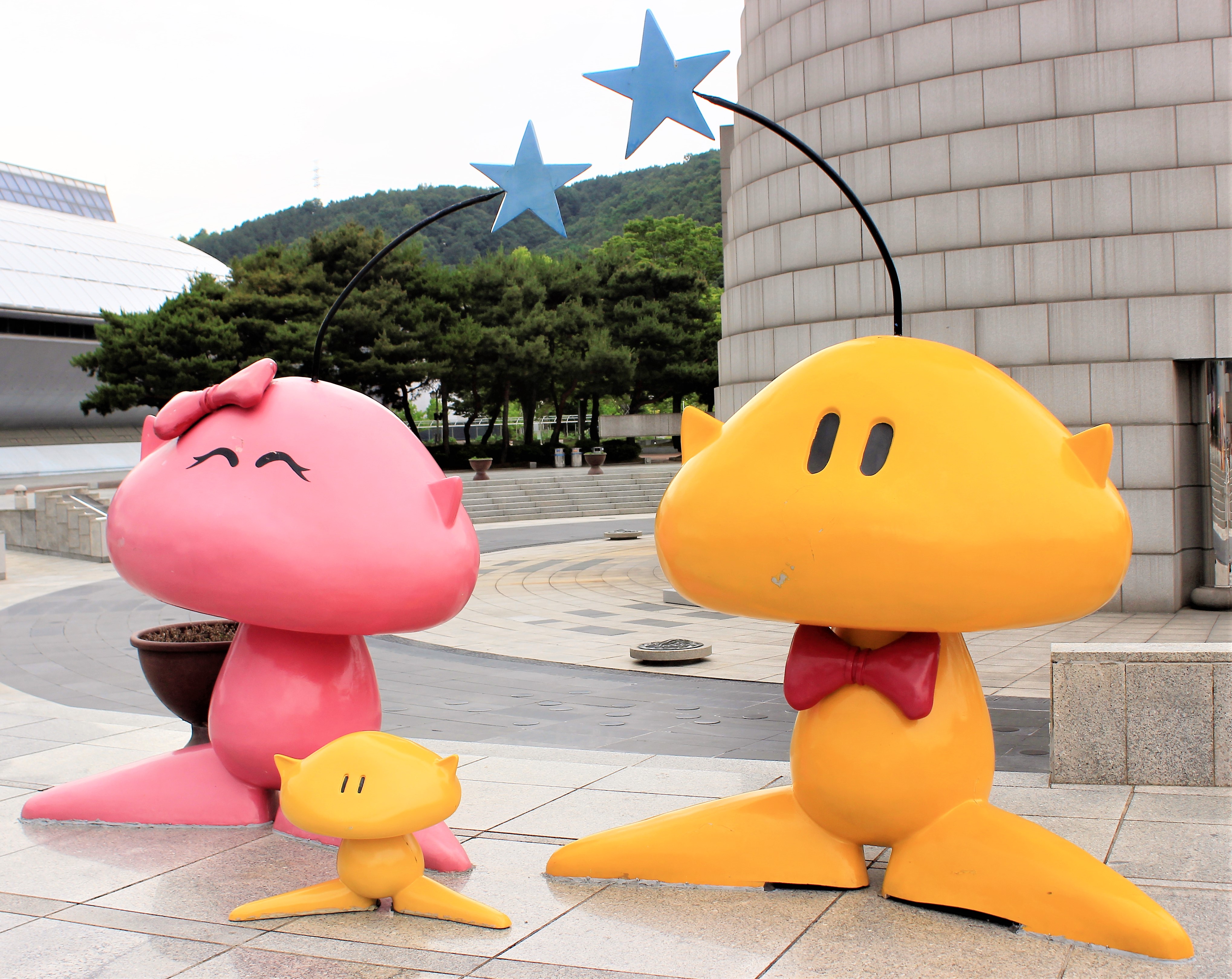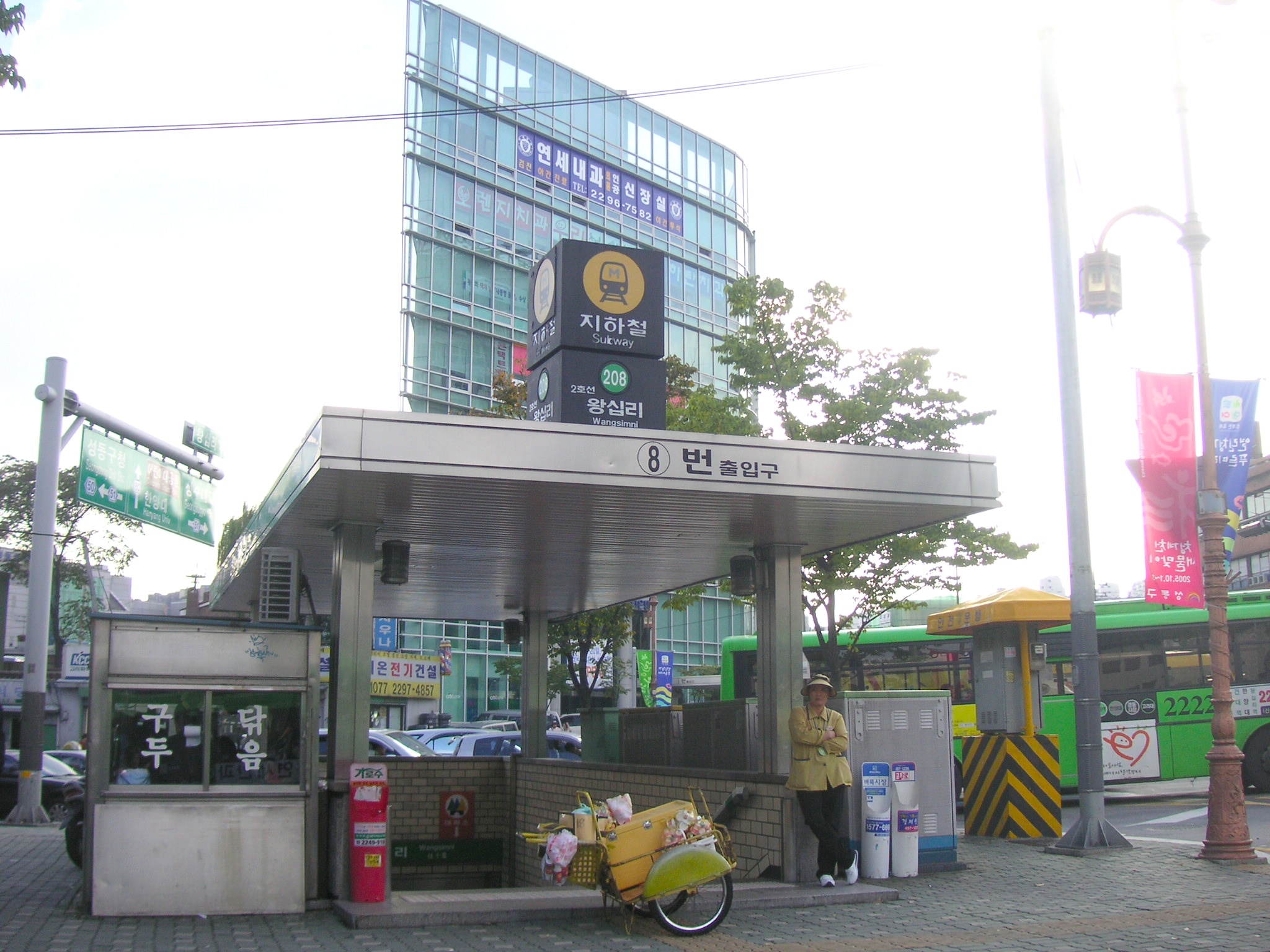|
Gyeongwon Line
The Gyeongwon Line is a railway line serving northeastern Gyeonggi Province in South Korea. The line is operated by Korail. The name of the line came from ''Gyeongseong'' (Seoul) and ''Wonsan'', the original terminus of the line, in what is now North Korea. History One of the first construction projects undertaken by the Railway Bureau of the Government General of Korea was for an east−west trunk line to connect Keijō to the important port of Wonsan. The Chosen Government Railway (''Sentetsu'') opened the line in several stages between 1911 and 1914. The first section of mainline to be electrified by Sentetsu was also along the Gyeongwon Line, with the Pokkye− Gosan section being energised on 27 March 1944, as part of a plan made jointly with the South Manchuria Railway for an electrified railway all the way from Busan to Xinjing, capital of Manchukuo. After the partition of Korea following the end of the Pacific War in 1945, the Gyeongwon Line was split along ... [...More Info...] [...Related Items...] OR: [Wikipedia] [Google] [Baidu] |
Passenger Rail Terminology
Various terms are used for passenger railway lines and equipment; the usage of these terms differs substantially between areas: Rapid transit A rapid transit system is an electric railway characterized by high speed (~) and rapid acceleration. It uses passenger railcars operating singly or in multiple unit trains on fixed rails. It operates on separate right-of-way (transportation), rights-of-way from which all other vehicular and foot traffic are excluded (i.e. is fully grade separation, grade-separated from other traffic). The APTA definition also includes the use sophisticated railway signalling, signaling systems, and railway platform height, high platform loading. Originally, the term ''rapid transit'' was used in the 1800s to describe new forms of quick urban public transportation that had a right-of-way separated from street traffic. This set rapid transit apart from horsecars, trams, streetcars, bus, omnibuses, and other forms of public transport. A variant of the ter ... [...More Info...] [...Related Items...] OR: [Wikipedia] [Google] [Baidu] |
Daejeon
Daejeon (; ) is South Korea's list of cities in South Korea, fifth-largest metropolis, with a population of nearly 1.5 million. Located in a central lowland valley between the Sobaek Mountains and the Geum River, the city is known both as a technology and research center, and for its close relationship with the natural environment. Daejeon serves as a hub of transportation for major rail and road routes, and is approximately 50 minutes from the capital, Seoul, by Korea Train Express, KTX or Suseo high-speed railway, SRT high speed rail. Daejeon (along with Seoul, Gwacheon and Sejong City) is one of South Korea's administration hubs. The city is home to 23 universities and colleges, including KAIST, Korea Advanced Institute of Science and Technology (KAIST) and Chungnam National University, as well as government research institutes, and research and development centers for many chaebols such as Samsung, LG, mostly located in the city's ''Daedeok Innopolis, Daedeok Yeongu Danj ... [...More Info...] [...Related Items...] OR: [Wikipedia] [Google] [Baidu] |
Mangu Line
The Mangu Line is a railway line connecting from Mangu to Kwangwoon University on the Gyeongwon Line, called the Mangu Line, which opened on December 30, 1963. Since November 4, 2013, the rapid transit service has been through this line executed. See also * Seoul Metropolitan Subway * Rail transport in South Korea Railways are a part of the transport in South Korea, transport network in South Korea and an important mode of the rail transport, conveyance of people and rail freight transport, goods, though they play a secondary role compared to the road ne ... * Jungang Line References Seoul Metropolitan Subway lines Railway lines in South Korea Railway lines opened in 1964 {{SouthKorea-rail-transport-stub ... [...More Info...] [...Related Items...] OR: [Wikipedia] [Google] [Baidu] |
Hankuk University Of Foreign Studies Station
Hankuk University of Foreign Studies Station is a station on Line 1 of the Gyeongwon Line. The original name of this station was Hwigyeong Station (), although this station is located in Imun 1-dong. Because Hoegi Station (Preceding station) is located in Hwigyeong-dong, in 1996, the name of this station was changed to Hankuk University of Foreign Studies Station, after a nearby eponymous university. Originally the station was built on a 4-way crossroad layout. However in 2012, due to a series of accidents and safety concerns, a tunnel was built under the track for road traffic alongside an above ground pedestrian walkway. Despite this, the ground level crossing remains to this day. Vicinity *Exit 1: Hankuk University of Foreign Studies Hankuk University of Foreign Studies (abbreviated as HUFS; ) is a Private university, private research university in Seoul, South Korea. The university currently teaches 45 foreign languages. In addition, it contains studies in humanities, la ... [...More Info...] [...Related Items...] OR: [Wikipedia] [Google] [Baidu] |
Mangu Station
Mangu station is a station on the Gyeongui–Jungang Line, and the Gyeongchun Line since 21 December 2010. The station was Seoul's main distribution center of charcoal briquettes in the 1950s and 1960s, extracted and manufactured in southern Gangwon province. These briquettes were widely used by people to weather harsh winters when Korea was a developing country and recovering from the Korean War. It is a station that still predominantly handles freight trains. It is very close to an E-Mart and Costco stores. Although it is located close to the Sangbong bus terminal and Sangbong station, it has yet to fulfill its potential as a transportation hub. With the electrification and double tracking of the Gyeongchun Line, this station is the newly designated western terminus station (however, the Gyeongchun Line operates about 1 km west further till its ''de facto'' terminus, Sangbong). External links Station informationfrom Korail The Korea Railroad Corporation () is t ... [...More Info...] [...Related Items...] OR: [Wikipedia] [Google] [Baidu] |
Hoegi Station
Hoegi Station is a station on Seoul Subway Line 1, the Gyeongchun Line and the Gyeongui–Jungang Line. The two island platforms are side-by-side with each other, and are connected by an overpass. This is the closest station to Kyung Hee University, located northwest of here. References External links Station informationfrom Korail The Korea Railroad Corporation () is the national railway operator in South Korea. It is branded as KORAIL () and changed its official Korean name () in November 2019. Currently, KORAIL is a public corporation, managed by Ministry of Land, ... Metro stations in Dongdaemun District Seoul Metropolitan Subway stations Railway stations in South Korea opened in 1980 {{Seoul-metro-station-stub ... [...More Info...] [...Related Items...] OR: [Wikipedia] [Google] [Baidu] |
Cheonggyecheon
Cheonggyecheon (, ) is a stream and public space in downtown Seoul, South Korea. A natural stream sourced from the Suseongdong Valley in Inwangsan, it was historically maintained as part of Seoul's early sewerage until the mid-20th century, when post-Korean War rapid economic development and deteriorating conditions prompted the filling of the stream with concrete and the construction of an elevated freeway, the Cheonggye Expressway, in its place. In 2003, the city government began an urban renewal project to remove the expressway and restore the stream, which was completed in 2005 at a cost of over (approximately US$281 million). The Cheonggyecheon restoration project initially attracted significant public criticism, but since its opening in 2005 it has become popular among residents and tourists. Geography Cheonggyecheon is an stream flowing west to east through downtown Seoul, and then meeting Jungnangcheon, which connects to the Han River and empties into the Yellow ... [...More Info...] [...Related Items...] OR: [Wikipedia] [Google] [Baidu] |
Wangsimni Station
Wangsimni Station is a station on Seoul Subway Line 2, Seoul Subway Line 5, Gyeongui–Jungang Line, and Suin–Bundang Line; most Suin–Bundang Line trains end service here, though a few daily services continue along the tracks used by the Gyeonggi-Jungang line to terminate at the next station, Cheongnyangni in northeastern Seoul. It is located in Haengdang-dong, Seongdong-gu, Seoul. The name of the station, "Wangsimni", is related to a historical account dating from 14th century Korea. After establishing and becoming the first king of the Joseon dynasty, Yi Seong-gye presented the great Buddhist monk Muhak with the task of finding a site for the new capital. After searching for a suitable place, the monk stopped and saw an old farmer passing by on his ox. The farmer pointed toward the northwest and said to him, ''wangsimni'' (往十里), literally meaning 'go ten more li (li = a unit measure that equals to one-third of a mile).' The startled Muhak went to the northwe ... [...More Info...] [...Related Items...] OR: [Wikipedia] [Google] [Baidu] |
Eungbong Station
Eungbong is a station on the Gyeongui–Jungang Line. Station layout Vicinity *Exit 1: Eungbong Elementary School, Gwanghui Middle School External links Station informationfrom Korail The Korea Railroad Corporation () is the national railway operator in South Korea. It is branded as KORAIL () and changed its official Korean name () in November 2019. Currently, KORAIL is a public corporation, managed by Ministry of Land, ... {{Gyeongwon Line Seoul Metropolitan Subway stations Railway stations in South Korea opened in 1978 Metro stations in Seongdong District ... [...More Info...] [...Related Items...] OR: [Wikipedia] [Google] [Baidu] |



